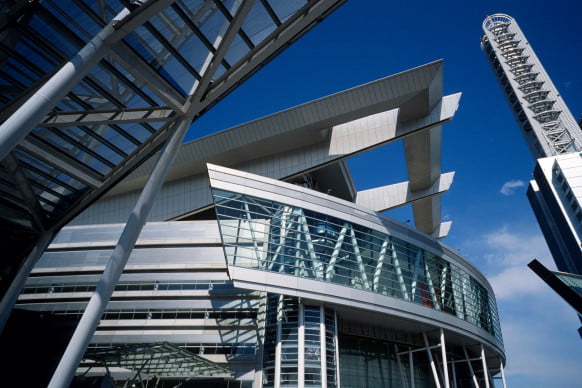NOT LONG AFTER the Dallas Cowboys debuted the NFL’s largest video board at their new stadium in 2009, the Houston Texans rolled out an even bigger screen. Then the Jacksonville Jaguars went even bigger at their new venue, throwing in an in-stadium swimming pool as a bonus. The building of NFL stadiums has become an arms race, but architect Dan Meis is calling for a de-escalation. Maybe, he says, the future of stadiums means less is more.

Meis knows first-hand what that arms race looks like. His company, MEIS Architects, has offices in New York and Los Angeles, and he designed two current NFL stadiums: Paul Brown Stadium in Cincinnati and Lincoln Financial Field in Philadelphia. He’s also been among the architects to submit ideas for new venues in Los Angeles and San Diego. But no matter how many NFL owners light up at the thought of a 70,000-seat stadium with a retractable roof and seats that vibrate when the action on the field gets intense, Meis wants to push in the opposite direction. He believes the future looks smaller, more durable, and more versatile. Think Subaru Outback, not Maybach.
The primary concern, he says, is economics. Major stadium projects today start at a billion dollars and go up from there, and taxpayers typically foot the bill for much of that. To make things worse, some venues may not be around more than 20 to 30 years. Atlanta is scheduled to open a new $1.4 billion stadium in 2017, even though the Falcons’ current home, the Georgia Dome, debuted in 1992. Unless owners can find extra big-time events to host, a stadium may only be used 20 or so times per year. At 20 events a year over 30 years, that’s $1.6 million per event at a billion-dollar venue.
“We keep falling over ourselves about what’s the next big board? What’s the next thing you’re going to put in stadiums?” said Meis, whose best known work is theStaples Center in Los Angeles. “In reality, I think it’s coming back to the best stadium would be not to build it at all or if there’s a way to do it in a temporary way and save all that money on infrastructure.”
Meis isn’t kidding about the ideal stadium being no stadium at all. He’s fascinated by the Palio de Siena, a centuries-old horse race that takes place in Tuscany’s Piazza del Campo. Nearly every day, the piazza stands as a grand public space in the center of town, but two times each year, it’s converted into an impromptu stadium where thousands of spectators flock to watch the race.
That pop-up stadium concept works better for events like the Olympics or World Cup, which come around every four years and may be hosted by countries without the means to fill those stadiums once the event is over. But another Meis concept — a building that changes, Optimus Prime-style, from a 20,000-seat basketball arena to a 35,000-seat soccer stadium — could provide a solution.
It sounds futuristic, but the transformable stadium has been a reality for more than a decade in Japan. Meis’ design for the Saitama Super Arena allows for a gigantic section of seats — along with all the plumbing and mechanical connections beneath them in the concourse — to rise up, slide back some 70 meters and plug back in with the smoothness and accuracy of a Swiss watch.
[“source-wired”]





